A close-up view on ITS2 evolution and speciation - a case study in the Ulvophyceae (Chlorophyta, Viridiplantae)
- PMID: 21933414
- PMCID: PMC3225284
- DOI: 10.1186/1471-2148-11-262
A close-up view on ITS2 evolution and speciation - a case study in the Ulvophyceae (Chlorophyta, Viridiplantae)
Abstract
Background: The second Internal Transcriber Spacer (ITS2) is a fast evolving part of the nuclear-encoded rRNA operon located between the 5.8S and 28S rRNA genes. Based on crossing experiments it has been proposed that even a single Compensatory Base Change (CBC) in helices 2 and 3 of the ITS2 indicates sexual incompatibility and thus separates biological species. Taxa without any CBC in these ITS2 regions were designated as a 'CBC clade'. However, in depth comparative analyses of ITS2 secondary structures, ITS2 phylogeny, the origin of CBCs, and their relationship to biological species have rarely been performed. To gain 'close-up' insights into ITS2 evolution, (1) 86 sequences of ITS2 including secondary structures have been investigated in the green algal order Ulvales (Chlorophyta, Viridiplantae), (2) after recording all existing substitutions, CBCs and hemi-CBCs (hCBCs) were mapped upon the ITS2 phylogeny, rather than merely comparing ITS2 characters among pairs of taxa, and (3) the relation between CBCs, hCBCs, CBC clades, and the taxonomic level of organisms was investigated in detail.
Results: High sequence and length conservation allowed the generation of an ITS2 consensus secondary structure, and introduction of a novel numbering system of ITS2 nucleotides and base pairs. Alignments and analyses were based on this structural information, leading to the following results: (1) in the Ulvales, the presence of a CBC is not linked to any particular taxonomic level, (2) most CBC 'clades' sensu Coleman are paraphyletic, and should rather be termed CBC grades. (3) the phenetic approach of pairwise comparison of sequences can be misleading, and thus, CBCs/hCBCs must be investigated in their evolutionary context, including homoplasy events (4) CBCs and hCBCs in ITS2 helices evolved independently, and we found no evidence for a CBC that originated via a two-fold hCBC substitution.
Conclusions: Our case study revealed several discrepancies between ITS2 evolution in the Ulvales and generally accepted assumptions underlying ITS2 evolution as e.g. the CBC clade concept. Therefore, we developed a suite of methods providing a critical 'close-up' view into ITS2 evolution by directly tracing the evolutionary history of individual positions, and we caution against a non-critical use of the ITS2 CBC clade concept for species delimitation.
Figures
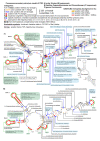
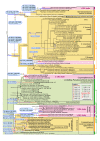
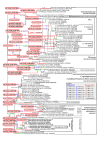

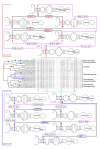
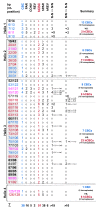

Similar articles
-
A consensus secondary structure of ITS2 in the chlorophyta identified by phylogenetic reconstruction.Protist. 2013 Jul;164(4):482-96. doi: 10.1016/j.protis.2013.04.005. Epub 2013 Jun 13. Protist. 2013. PMID: 23770573
-
Evolutionary diversification indicated by compensatory base changes in ITS2 secondary structures in a complex fungal species, Rhizoctonia solani.J Mol Evol. 2009 Aug;69(2):150-63. doi: 10.1007/s00239-009-9260-3. Epub 2009 Jul 16. J Mol Evol. 2009. PMID: 19609478
-
A consensus secondary structure of ITS2 for the diatom Order Cymatosirales (Mediophyceae, Bacillariophyta) and reappraisal of the order based on DNA, morphology, and reproduction.Mol Phylogenet Evol. 2018 Dec;129:117-129. doi: 10.1016/j.ympev.2018.08.014. Epub 2018 Aug 25. Mol Phylogenet Evol. 2018. PMID: 30153502
-
ITS2 sequence-structure analysis in phylogenetics: a how-to manual for molecular systematics.Mol Phylogenet Evol. 2009 Aug;52(2):520-3. doi: 10.1016/j.ympev.2009.01.008. Mol Phylogenet Evol. 2009. PMID: 19489124 Review.
-
Phylogenetic Utility of rRNA ITS2 Sequence-Structure under Functional Constraint.Int J Mol Sci. 2020 Sep 3;21(17):6395. doi: 10.3390/ijms21176395. Int J Mol Sci. 2020. PMID: 32899108 Free PMC article. Review.
Cited by
-
Identity, ecology and ecophysiology of planktic green algae dominating in ice-covered lakes on James Ross Island (northeastern Antarctic Peninsula).Extremophiles. 2017 Jan;21(1):187-200. doi: 10.1007/s00792-016-0894-y. Epub 2016 Nov 25. Extremophiles. 2017. PMID: 27888351
-
Hyaloscypha gabretae and Hyaloscypha gryndleri spp. nov. (Hyaloscyphaceae, Helotiales), two new mycobionts colonizing conifer, ericaceous and orchid roots.Mycorrhiza. 2022 Jan;32(1):105-122. doi: 10.1007/s00572-021-01064-z. Epub 2022 Jan 14. Mycorrhiza. 2022. PMID: 35028741
-
Applying an internal transcribed spacer as a single molecular marker to differentiate between Tetraselmis and Chlorella species.Front Microbiol. 2023 Aug 23;14:1228869. doi: 10.3389/fmicb.2023.1228869. eCollection 2023. Front Microbiol. 2023. PMID: 37680531 Free PMC article.
-
DNA Barcoding Green Microalgae Isolated from Neotropical Inland Waters.PLoS One. 2016 Feb 22;11(2):e0149284. doi: 10.1371/journal.pone.0149284. eCollection 2016. PLoS One. 2016. PMID: 26900844 Free PMC article.
-
Paralia (Bacillariophyta) stowaways in ship ballast: implications for biogeography and diversity of the genus.J Biol Res (Thessalon). 2015 Feb 15;22(1):2. doi: 10.1186/s40709-015-0024-5. eCollection 2015 Dec. J Biol Res (Thessalon). 2015. PMID: 25984507 Free PMC article.
References
Publication types
MeSH terms
Substances
LinkOut - more resources
Full Text Sources

